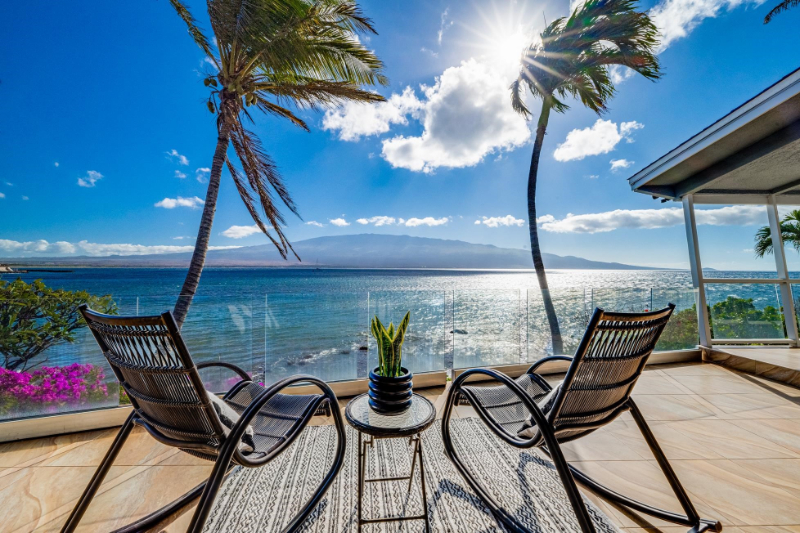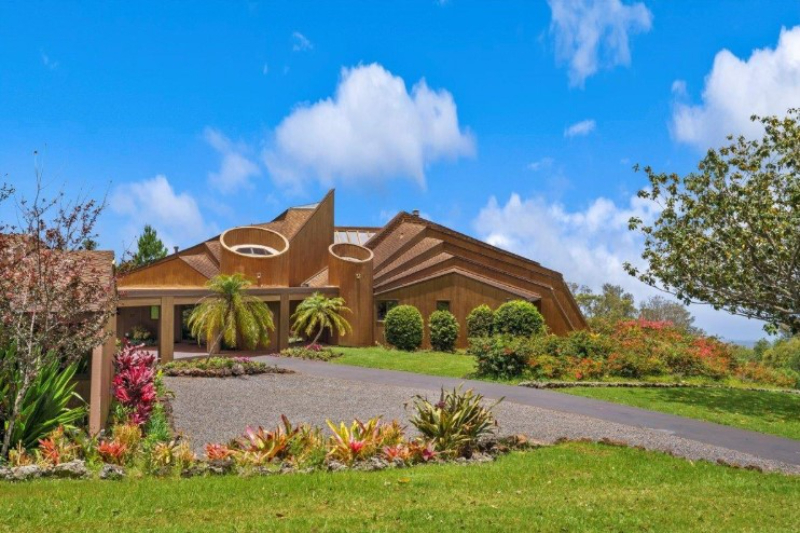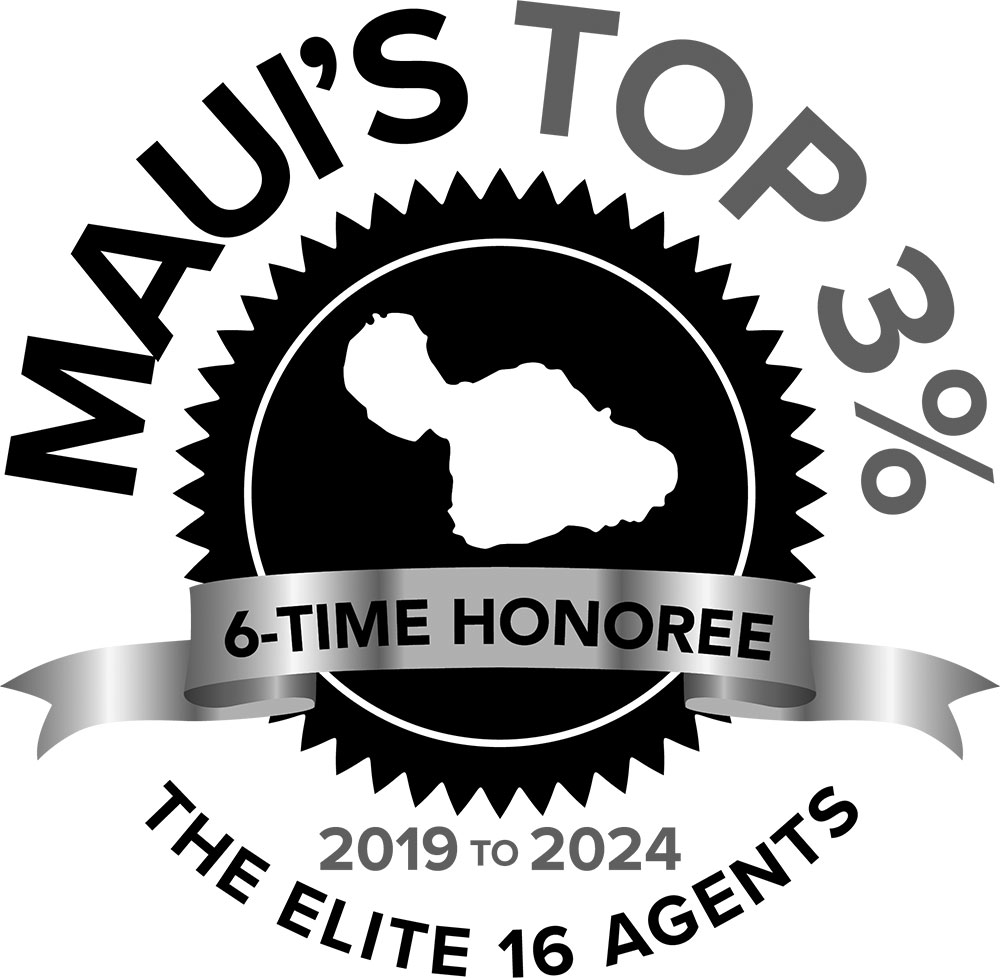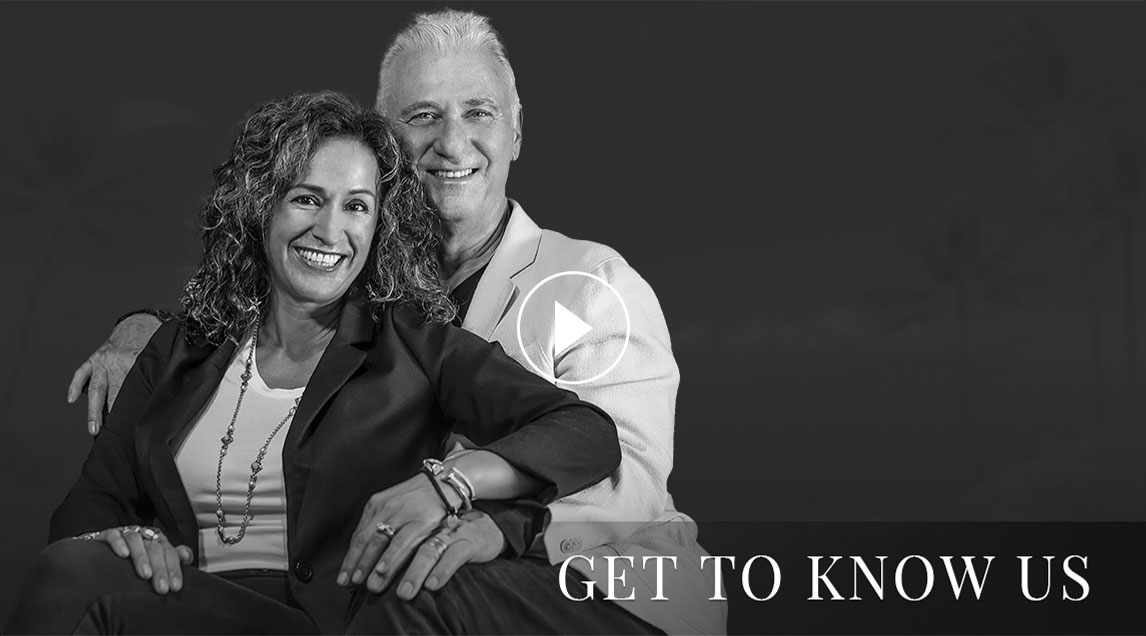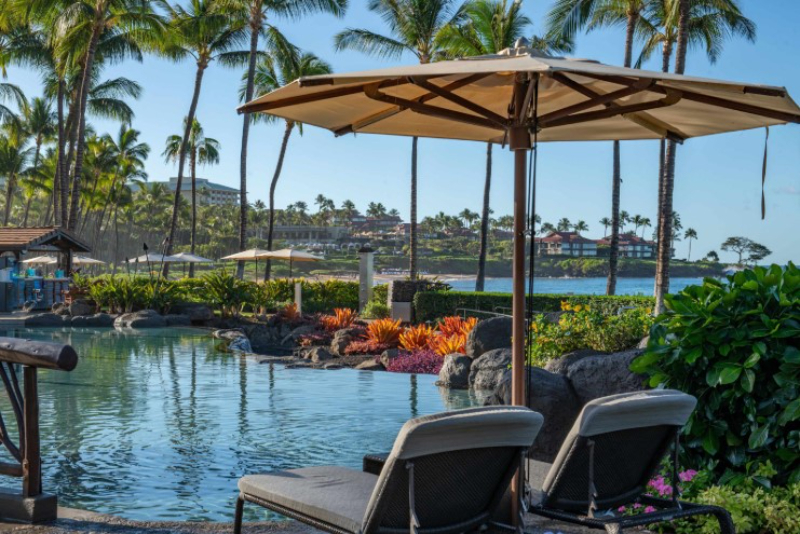
Selling a Maui oceanfront home or condo can be a high-stakes endeavor. The buyers are experienced, the properties are rare, and expectations run high. To get the strongest return, you need more than a desirable view or beachfront location. You also need a strategy that speaks to what today’s buyers actually value.
This guide covers what works. You’ll learn which upgrades matter, how to price with precision, how to create emotional impact through staging, and what marketing channels attract serious buyers. It also covers the current Maui real estate landscape so you can time your sale and position your home effectively.
Table of Contents
9 ACTIONABLE STRATEGIES TO MAXIMIZE ROI
You only get one chance to make a first impression. In the luxury market, that impression has to justify the price. Before the listing goes live, there are a few key moves that can shift your sale from decent to exceptional.
For exceptional results:
- Invest in strategic pre-sale upgrades
- Focus on oceanside appeal more than curb appeal
- Upgrade your smart home features
- Maximize emotional impact with professional staging
- Boost online appeal with virtual staging
- Price it right from the start
- Create a visual and emotional narrative that makes your property stand out
- Work with Dennis and Martha
- Prepare for negotiation and closing strategies
-
Invest in strategic pre-sale upgrades
Not every upgrade adds value, but the right ones can strengthen your position in a competitive market. Buyers looking at Maui oceanfront homes or condos expect quality, functionality, and a clear sense of lifestyle. They aren’t looking for a project, they’re looking for something polished and ready.
- Kitchen and bathroom upgrades. Focus on clean finishes, open layouts, and materials that hold up well in a coastal setting. In neighborhoods like Wailea and Kapalua, buyers expect quartz or natural stone countertops, modern tilework, and premium fixtures. If your home still has bulky cabinets or outdated lighting, it’s worth making a change.
- Outdoor enhancements. Oceanfront buyers are paying for lifestyle. That means your lanai, pool area, and any space that connects to the ocean should feel like an extension of the living area. Covered seating, updated decking, surfboard storage, or a well-placed outdoor shower can add impact. Homes in Launiupoko or Kaanapali often stand out because of how well they frame the view.
- Permitting pitfalls. Before starting any updates near the shoreline, check with Maui County Planning or the Department of Land and Natural Resources. Even small changes like retaining walls or fence adjustments may require review in the Resorts. Properties within the shoreline setback area are closely regulated, and unpermitted work can hold up a sale or reduce buyer confidence.
-
Focus on oceanside appeal more than curb appeal
Most sellers focus on what the home looks like from the street, but with Maui real estate, the true first impression comes from the water. That ocean-facing side is what sells the lifestyle, and buyers notice every detail.
- Salt-tolerant landscaping. The ocean breeze can be tough on standard plants. Use native or salt-resistant options like naupaka, pohinahina, or beach morning glory to keep your shoreline looking lush. These hold up better over time and help reduce maintenance concerns for buyers.
- Clean sightlines. Trim back overgrowth that blocks the view. If you have glass railings, make sure they’re spotless. Buyers will walk out to the lanai and immediately look for the line where your property meets the horizon.
- Shoreline access and presentation. If your home has private beach access or a path down to the water, keep it safe, clear, and attractive. Replace any worn-out stairs or pavers, and make sure lighting is subtle but functional. Buyers see these areas as an extension of the home.
- Noise and privacy. If nearby beach activity is visible or audible, consider adding strategic landscaping or screens to buffer the space. Oceanfront buyers want to feel like they’re getting a private retreat, not a public lookout.
-
Upgrade your smart home features
Buyers looking at high-end Maui real estate often live part-time on the island. For many, control and peace of mind matter just as much as square footage. Smart home upgrades show that the home is modern, secure, and well-maintained.
- Security systems. A strong, smart security setup is a top priority for many second-home buyers. Systems that include cameras, smart locks, motion detectors, and mobile access offer both safety and visibility from anywhere. Buyers want to know they can monitor the property when they’re off-island.
- Climate control. Humidity, salt air, and heat can damage a home if left unmanaged. Smart thermostats that allow remote adjustments help protect finishes and reduce long-term maintenance issues. Zoned A/C with smart controls is a strong selling point, especially in areas like Kihei and Lahaina, where airflow conditions can vary.
- Lighting systems. App-controlled lighting adds flexibility and ease. Buyers appreciate being able to adjust lights remotely, set timers, and create settings for entertaining, arrival, or overnight security.
-
Maximize emotional impact with professional staging

Staging draws buyers’ eyes to the view and helps them picture life inside the home. Buyers purchase based on how a home makes them feel, not its specs or price. Staging helps create that emotional connection, especially in luxury listings where expectations are high and every detail counts.
- Highlight ocean flow. Arrange furniture to guide the eye toward the water. Keep window areas clear, open the space between the indoor living area and the lanai, and create zones that emphasize how the home interacts with the view. Buyers want to feel like the ocean is part of the living space.
- Keep it light and neutral. Use a soft, coastal palette to let the natural surroundings do the work. Avoid bold color schemes or heavy furniture that distracts from the setting. Think natural textures, breezy fabrics, and layouts that make the home feel open and easy to live in.
- Add local design cues. A few carefully chosen pieces can help ground the home in its environment. Koa wood, lava rock, and Hawaiian kapa prints add a sense of place without overwhelming the space. The goal is to create a subtle connection to Maui, not a theme.
-
Boost online appeal with virtual staging
Not every seller has the time, budget, or ability to stage a home in person. Virtual staging offers a flexible, cost-effective alternative. It’s especially useful for vacant properties or for sellers who no longer live on the island.
- Cost-effective alternative. Virtual staging is significantly more affordable than full physical staging. It allows you to show buyers what a space could look like with furniture, art, and layout suggestions without the expense of moving anything in.
- Ideal for absentee owners or vacant homes. If you’re no longer living in the home or condo, or if it’s currently unoccupied, virtual staging helps avoid the cold, empty feel of a vacant space. It adds life and scale to the photos, helping buyers visualize how the rooms function.
- Boosts online appeal. Most buyers will first see your property online. Virtual staging creates stronger listing photos that stop the scroll and drive more showings. It’s especially valuable when targeting off-island or international buyers who rely heavily on digital presentation.
-
Price it right from the start

Spanning over 10 acres, this upcountry estate listed at $4.9 million stands out not just for its bold design, but also for a savvy price point. In the luxury market, small pricing nuances can make a big impact. The asking price sets the tone for the entire sale. If the price is too high, serious buyers may skip the listing altogether. If the price is too low, you risk leaving money on the table. In the Maui real estate market, especially with luxury waterfront homes, precision matters.
- Avoid overpricing. Buyers at this level know the market. They’ve looked at multiple listings, often across neighborhoods and islands. If your price is out of sync, your home could sit for weeks with little action. That creates the perception that something is wrong, even when it isn’t.
- Use a full CMA. A strong Comparative Market Analysis looks at both fee simple and leasehold properties, adjusting for view quality, beach access, lot size, and interior condition. This isn’t just about square footage. A third-row home in Kihei doesn’t compare to a direct waterfront home in Makena.
- Strategic pricing psychology. Pricing at $4.95 million instead of $5 million can make a difference. It expands your home’s visibility across more buyer search ranges and sidesteps the psychological barrier associated with round-number pricing. Luxury buyers remain sensitive to pricing signals, making strategic pricing a powerful tool at the high end of the market.
- Price per oceanfront foot. In areas like Wailea, Makena or Kihei, , ocean frontage can vary widely. Understanding how many feet of direct shoreline you’re offering and how that compares to nearby comps can help justify your price and strengthen your negotiating position.
-
Create a visual and emotional narrative that makes your property stand out
At the luxury level, the way a home is presented has a direct impact on how quickly it sells and for how much. Marketing is about creating a complete visual and emotional narrative that makes your piece of Maui real estate stand out.
- High-end photography and video. Buyers expect professional visuals. This includes golden-hour photography, aerial drone footage, and cinematic video tours. Highlight the view, the light, and how the home connects to the outdoors. Photos should feel aspirational, not just functional.
- Lifestyle marketing. You aren’t just selling a house, you’re selling the ability to walk barefoot to the beach at sunrise, paddle out for a morning surf, or enjoy sunset dinners on the lanai. Use visuals and language that focus on the lifestyle buyers are looking for, not just features and specs.
- 3D tours and walkthroughs. These are critical for off-island buyers who often make decisions before ever stepping foot in the home. A quality 3D tour increases time spent on the listing and can drive more serious inquiries from qualified buyers.
- Global exposure. Your buyer might be in LA, Tokyo, Vancouver, or New York. Expanding your listing’s reach to international and mainland audiences is essential. Use targeted marketing that connects with high-net-worth buyers wherever they are, and make sure your online presence reflects the quality of the home.
-
Work with the right agent

The right agent protects your value, anticipates roadblocks, and connects you with serious buyers. When it comes to selling a home in the Maui real estate market, who you list with matters. The right agent doesn’t just market the home. They protect your value, anticipate roadblocks, and connect you with serious buyers.
- The right agent understands Maui-specific requirements. Oceanfront homes come with extra layers such as shoreline setback regulations, potential erosion issues, leasehold disclosures, and cultural considerations. An experienced local agent knows how to navigate these details and flag them early so they don’t become problems later.
- The right agent has a proven track record. Ask for results, not just promises. A strong agent should be able to show recent sales of comparable oceanfront homes in areas like Makena, Kuau, and Kaanapali. They should know what buyers in those neighborhoods expect and what turns them off.
- The right agent has access to private networks. Some of Maui’s highest-value deals never hit the MLS. The right agent has connections with other top producers, investors, and off-market channels that can bring serious, qualified buyers to your door without ever going public.
- The right agent is a skilled negotiator. In the luxury space, negotiation goes beyond price. The right agent understands how to manage timelines, deal with complex contingencies, and protect your position through inspections and escrow.
-
Prepare for negotiation and closing strategies
Once the offers start coming in, your approach to negotiation and closing can make or break the final outcome. At the luxury level, buyers often come prepared, with sharp agents, strong opinions, and very specific instructions. Being ready for what happens after the offer is just as important as the prep before it.
- Pre-inspection and reports. Consider ordering a pre-listing inspection, termite report, and shoreline disclosure ahead of time. These documents help reduce uncertainty and show buyers you’re serious. It also lets you stay ahead of potential red flags that might otherwise derail negotiations.
- Multiple offers. If your home attracts more than one offer, look beyond price. Clean terms, large deposits, minimal contingencies, and flexible timelines can add real value. A slightly lower offer with stronger terms may be the better deal overall.
- Seawall and erosion clarity. Coastal erosion is a reality for many Maui homes and condos, and buyers will ask about it. If your property has a seawall or is within the shoreline setback area, have that information ready. Transparency builds trust and keeps the deal moving.
- Timing considerations. Some buyers are navigating 1031 exchanges or aiming to close before specific tax deadlines. Others may be paying cash but want time to coordinate a move or renovation crew. The more flexible and prepared you are, the more leverage you hold during negotiation.
IS NOW THE RIGHT TIME TO SELL?

The short answer: it depends on your goals, but the current Maui real estate market still favors well-positioned oceanfront homes and condos. Buyers are definitely more value-focused than they were before, but serious interest remains, especially for properties priced right and presented well.
- Pricing and pace. Home and condo values remain high, but average days on market have grown slightly in areas with more inventory. Properties in Makena, Wailea and Kapalua still move quickly when priced strategically. Buyers today are more deliberate, so pricing precision matters more than ever.
- Who’s buying. Most oceanfront interest still comes from mainland buyers, particularly from California, Arizona, Texas and the Pacific Northwest. Canadian snowbirds and some Asia-based investors are still active, especially in resort-style neighborhoods. Most are second-home buyers, looking for lifestyle and long-term value.
- When buyers are most active. Hawaii has no seasons and no wetsuits are needed.The snowbird season (November to April ), spring breaks, and summer months typically see the highest buyer traffic. Listing just ahead of these windows can give your property more visibility.
- What influences timing. Lower local inventory means less competition, which can work in your favor. Interest rates have less impact on the oceanfront space since many buyers pay cash, but rate shifts can still influence buyer urgency. Properties show best when skies are clear and trades are light.
READY TO MAXIMIZE YOUR RETURN?
Selling a home or condo on Maui takes more than a listing, it takes strategy. The right pricing, timing, and presentation can mean the difference between a decent sale and one that stands out.
If you’re ready to sell with confidence and get the return your home deserves, reach out to Dennis & Martha Rush at 808.280.0788 or send them an email to start building your plan.

